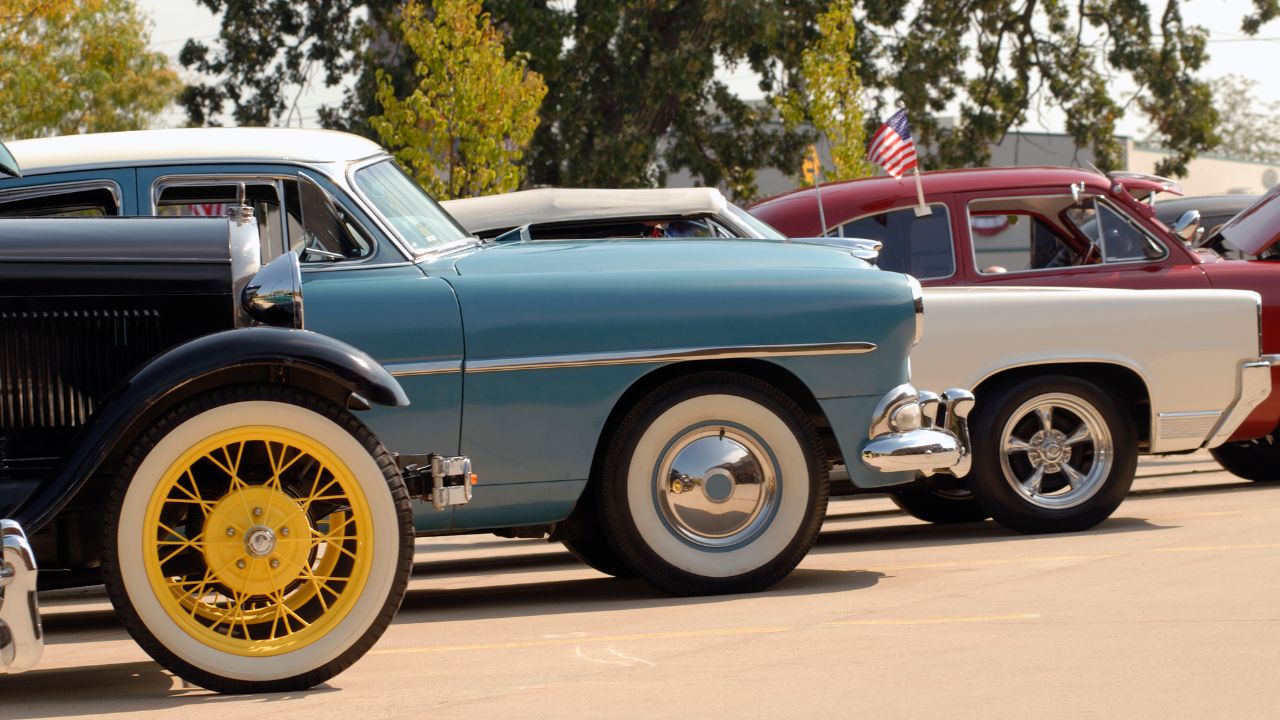
How many miles are your driving each year? This is a common question. But how can you determine your average driving distance? This article will help you determine the average mileage driven by your age, state and car type. After reading it, you'll be well-prepared for your next car purchase. You can start by filling out our free mileage calculator. We'll help you calculate your mileage accurately so you won't need to worry about how much it will cost.
Calculate the average annual mileage for a car
It's easy to calculate the annual mileage of a car by simply counting how many miles it travels each week. After one week of driving, the tripmeter on every car should read 0 on the trip meter. Take note of all journeys you make and multiply that total by 52 for the average annual mileage. For convenience, many drivers will round up their miles. They may also add weekend driving miles. After compiling this data, they can use the information to calculate an annual mileage.
There are two ways to calculate the average annual mileage of a car. First, look at the car's odometer. You can calculate the approximate annual mileage by multiplying the total mileage on a car by the number years it's been owned. If a car is five years old, it will have accumulated ten thousand miles annually. This method works only with new cars.

Calculate the average miles driven per age group
You've probably wondered: "How do I calculate the average miles driven by age group on a vehicle?" The average driving mileage for males is twice that of females, according to the US Department of Transportation. On average, males drive twice as far as females and this trend is expected to continue until at least 2040. While this figure is not representative of individual drivers, it is an interesting snapshot of what Americans are driving in general.
The average number of miles driven per person varies by age, and different age groups drive very differently. These numbers can vary greatly from one state to the next. Insurance rates for car insurance vary based on age. As such, it's important to compare rates and find the right one for your specific situation. Listed below are tips to compare rates and get the best policy.
Calculate the state's average miles
You can use this information to help you budget for car insurance. You will also get an idea of how much a used car costs. Car insurance companies use average mileage data in order to assess a person's likelihood of being involved in an accident. Your insurance premiums could rise if you drive more than the average annual mileage for a state. You don't have to drive more than the average annual mileage in your state. There are other ways you can determine this without increasing your insurance premium.
There are many factors that affect the average mileage of car owners. Your mileage will be affected by where you live and how old your car's licence holder is. Alaska is the state with the lowest average annual mileage of licensed drivers. You'll drive more if you reside in the state with the highest average annual mileage.

Calculate the average mileage driven by each vehicle type
The state's average driving miles vary widely. Drivers between the ages 35 and 45 drive more miles annually than those who are younger. Drivers aged 16-19 log 7,624 miles per year. Those age 20-34 drive an average of 15,098 miles per year. Look no further than the mileage sticker on your car to find out how many miles you drive each year.
According to a general rule, cars with higher mileage live for a longer time. It is because poorly maintained cars have a shorter lifetime and are more likely than others to develop serious issues. It shouldn't be shorter if the car isn't used as often as a well-maintained vehicle. You should have some life left if you only use your car in sparsely populated locations.
FAQ
How long does an automotive course take?
A course in automotive lasts three years.
The first year of your training is devoted to theory. You will learn all about cars. Practical training is the second year. You will learn to drive, fix engines and perform other tasks around the car. The last year is spent at a local shop, where you will get practical experience with real-world problems.
What should I know about car mechanics
You don't need to know anything about cars to work as an auto mechanic. It's enough to know how to fix things. It's why many people begin to fix things by fitting brake pads or changing tires.
It is important to be able to read and understand diagrams as well as written instructions. You will also need to understand how parts should be replaced or repaired.
It's important to remember that you shouldn't attempt to repair vehicles without having received proper training and guidance. This is especially true if your job involves expensive parts like transmissions or engines.
Although you won't have to know much about automobiles, you must be familiar with the basics of mechanical engineering as well as physics. This includes understanding the mechanics of how engines and brakes work.
You should also be ready to handle all kinds of situations. For instance, you might find yourself in charge of a vehicle that has been in a serious accident. You will also need to be able to deal with accidents and breakdowns.
You should also be open to learning quickly. You will need to be able not only to diagnose problems but also to perform simple maintenance tasks like tightening bolts and nuts.
Is it worth learning to be a mechanic?
The answer depends on what you are looking for in life. If money is your goal, then you can answer "yes". But if you are searching for meaning and purpose, then you should not answer this question.
You don't need to be a mechanic if you don't know how. It will not make you rich. It won't make your name famous. You won't be famous.
It would take you years to learn how to do everything correctly. This would mean that you would have to pay someone else for your car's repair. This is why most people don’t bother. They find something they enjoy instead.
You can make a lot of money if you are looking to do well. But if you want to live a meaningful life, stay away from the mechanic's industry.
How can I fix my automobile as a hobby.
If you are interested in cars, why not take it on as a hobby? You could repair them yourself, buy parts for them and sell them. Or just have fun with them. This would be a wonderful hobby if you're looking to find something completely different.
However, it's not easy to turn this into a full-time career. It requires a lot of hard work and dedication. And you'll need to invest a lot of money too.
You may not be able to have an emotional connection with cars unless there is a valid reason.
Statistics
- The U.S. Bureau of Labor Statistics (BLS) reports that the job outlook for automotive service technicians and mechanics is expected to decline by 4% from 2019 to 2029. (indeed.com)
- According to the BLS, the median annual salary for automotive service technicians and mechanics in the United States was $44,050 in May 2020. (uti.edu)
- There were 749,900 jobs available for automotive service technicians and mechanics in 2016, which is expected to grow by six percent through 2026. (jobhero.com)
External Links
How To
How to properly diagnose your vehicle for repair
Before you can determine if your car requires repairs, it's important to first analyze the symptoms. These steps will help you diagnose your car properly.
-
Check engine lights. The dashboard light indicators, including the engine light, oil pressure gauge, battery light indicator, coolant temperature gauge and RPM gauge, should be checked. If any of these indicators have been flashing continuously for several days it could mean that there is something wrong with your vehicle.
-
Check the treads of your tires. Tire wear can lead to problems in handling and brake performance. It is also important to inspect the wheel treads. They should look clean and be smooth. The best way to do this is to remove the wheels and take them off. Use a flashlight to see how well the treads are worn.
-
You should always monitor the level brake fluid. You must keep track on the level of brake fluid in your vehicle. You can ensure that your brakes are working properly by monitoring the level of brake fluid in your vehicle. If the brake fluid level is low, your brakes might fail when you apply pressure to them.
-
Check the suspension system. The suspension system in vehicles absorbs vibrations and shocks. It allows for better control, smooth acceleration, and deceleration. A suspension problem can cause your vehicle to feel wobbly and shake uncontrollably. If you are unsure if your vehicle is suffering from a suspension problem, put weight on the front and rear axles to check the movement.
-
Examine the steering column. The steering column connects the steering wheel to all other components of the vehicle. The steering column can often be damaged by an accident. You should replace your steering column if it feels loose or unstable.
-
Observe the exhaust pipes. Exhaust pipes help move gases from the combustion chamber to the atmosphere. You can let harmful fumes into your home if your exhaust pipes crack or leak. Additionally, your tailpipe should be fixed immediately if it is bent.
-
Look under your hood. If you see anything unusual, take a look under the hood. Leakage of fluids in your engine could indicate that it is leaking. In addition, if you notice an unusual smell coming from your engine compartment, you should contact a professional technician.
-
Make sure to check the air filter. The outside environment can collect dust and other debris in your vehicle's air filters. Vehicles that have a dirty air filter will not run well. Replace your air filter regularly.
-
Verify the fan belt. Your vehicle's fan belt connects the engine to the transmission. The engine will not turn if the fan belt breaks. The process of replacing the belt is straightforward. All you need are a screwdriver & pliers.
-
Verify the radiator hoses. The radiator hose transports water from radiator to engine. It can crack or become damaged and leak hot liquid onto an engine. You only need a pair of needle-nose pliers and a small wire brush to repair the hose.
-
The windshield wipers should be checked. Windshield wipers use electricity to remove snow and rain. They can leave streaks on your windows glass if they stop working. Simply change the washer oil to fix the problem.
-
You should inspect the cables. The battery cables supply power to your car's electrical systems. Before you change batteries, disconnect the positive cable. Failure to do so can damage your alternator.
-
Pay attention to your headlights. Headlights are used to illuminate the road ahead. If they don't work properly, it can cause poor visibility. Inspect the bulbs for signs of burnt out.
-
Always check your lights. The lights are there to warn other drivers if they approach you at night. If one doesn't work, it could distract you and lead to an accident.
-
Inspect your brakes. Before you get in a car accident, your brakes will be slowing down your vehicle. If your brakes aren't working properly, you may lose control and crash into other cars.
-
Change the oil. Keep your engine lubricated with oil. It helps prevent metal parts from wearing out too quickly. It is recommended to change the oil once a month.